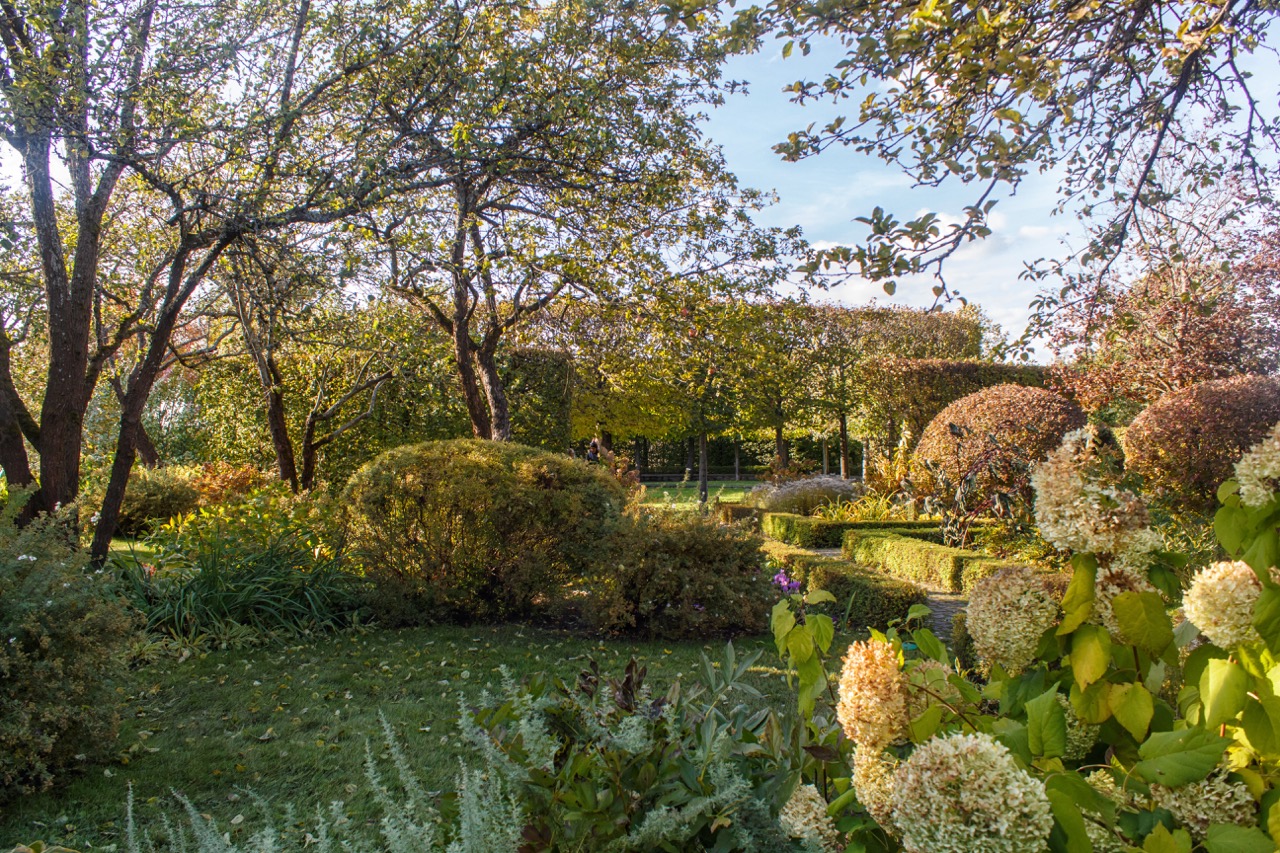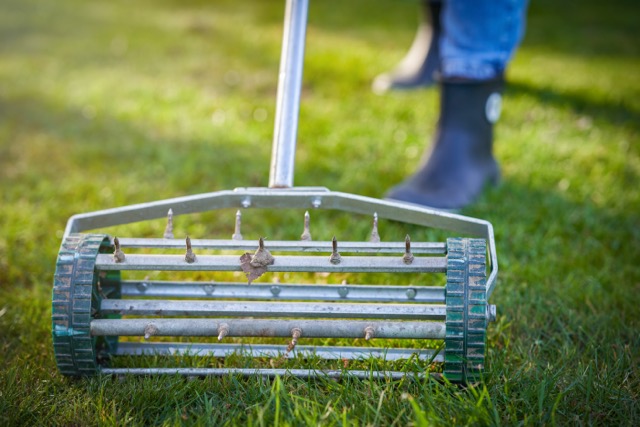Get Your Garden Ready For Autumn

Autumn's arrival paints the landscape in vibrant hues, but it's also prime time to prepare your garden for the colder months ahead. With a little effort now, your outdoor space will be flourishing come springtime.
This comprehensive guide explores essential autumn gardening tasks in the UK, ensuring your garden thrives throughout the year.
Fertilising Your Garden
The question "Should I fertilise my garden in autumn?" is a frequent one. The answer? Absolutely! Autumn boasts warm, moist soil – perfect for fertilisation. This helps plants develop a strong foundation for winter and a head start for spring. It's also an excellent time to fertilise your lawn for a healthy winter transition.
Fertilisers can be applied in various ways. Broadcasting is spreading it evenly over a large area, like a lawn. Side-dressing involves applying it near plants, avoiding direct contact with stems. Foliar feeding means applying it directly to leaves.
While not strictly necessary, some hand tools can simplify the process. A garden fork or rake can incorporate granular fertiliser into the soil, and a watering can is useful for liquid fertiliser.

Step-by-Step Fertilising:
- Test your soil: Knowing your soil type (clay, sand, loam) is crucial. Soil testing kits are readily available at garden centres.
- Choose the right fertiliser: Select a fertiliser specifically formulated for autumn use. Opt for slow-release fertilisers for a sustained nutrient boost throughout winter.
- Apply according to instructions: Each fertiliser product will have specific application rates. Follow these guidelines meticulously to avoid over-fertilisation.
- Water thoroughly: After fertilisation, water your plants deeply to help the nutrients reach the root zone.
The Power Of Pruning Your Garden
Autumn is a prime window for pruning trees and shrubs. This promotes healthy growth next spring and removes dead or damaged branches, encouraging new, vibrant shoots. However, timing is key – pruning too late in autumn can expose plants to winter damage. Research specific pruning needs for your trees and shrubs in your UK region.
What Is Pruning?
Pruning is the selective removal of plant parts like branches, buds, or flowers to control growth, shape, and health. It can encourage flowering, improve fruit production, and prevent diseases. Proper pruning involves using clean, sharp tools and understanding the best time to prune specific plants.
The Best Tools For Pruning
For efficient trimming of hedges and shrubs, Stihl offers a range of electric and petrol-powered hedge trimmers. One standout option is the Stihl HSA 45 Cordless Hedge Trimmer. This lightweight tool delivers impressive cutting performance, making it perfect for maintaining your home's outdoor spaces.
For those hard-to-reach branches, a pole pruner is an indispensable tool. The Stihl HTA 66 Cordless Pole Pruner is a prime example of precision engineering. Its 30cm cutting bar effortlessly tackles branches, while its lightweight design ensures comfortable use.
The Stihl GTA 26 Cordless Hand Pruner is a versatile tool for various garden tasks. Its powerful saw chain effortlessly cuts through branches and small wood. Comfortable to use, it features tool-free chain replacement and a long-lasting battery.
The Mulch Advantage
Mulching your garden beds in autumn offers numerous benefits. It acts as a protective layer, shielding plants from harsh winter weather and maintaining consistent soil moisture. Mulch also suppresses weeds and improves soil structure over time. Choose mulch compatible with your soil type and plants.
Types of Mulch:
Bark Chippings: A popular choice offering good drainage and weed suppression.
Woodchips: Provides excellent insulation and moisture retention.
Straw: Ideal for vegetable patches and offers fast decomposition, adding nutrients to the soil.
Compost: A nutrient-rich mulch that improves soil fertility as it decomposes.

Rake Leaves and Protect Tender Plants
Regularly rake leaves to prevent damage to your lawn and garden beds. Compost shredded leaves or use them as mulch, avoiding covering plants directly.
For tender plants, use horticultural fleece to create a protective layer, move potted plants indoors, or insulate pot plants with bubble wrap or fleece.
By following these guidelines, you'll set your garden up for success throughout the year. Enjoy your autumn gardening!
Plant Trees Now, Reap the Rewards Later
Autumn is an excellent time to expand your garden with new trees. Many trees respond well to planting during this season, giving them ample time to establish strong root systems before summer arrives. From native varieties like grevillea, bottlebrush, and banksia to citrus trees like lemons and oranges, autumn offers the perfect window for successful tree planting.
Prepare Your Vegetable Patch
Autumn is an excellent time to prepare your vegetable patch for the following growing season. Clear away any remaining plants and weeds to prevent disease and pest issues. Improve soil quality by digging in compost or well-rotted manure. Consider planting winter cover crops like rye or clover to protect the soil and add nutrients.
Plant Bulbs
For a stunning display of spring flowers, plant bulbs in autumn. Choose your favourite bulb varieties, such as tulips, daffodils, or hyacinths. Prepare the planting area by ensuring it's well-drained and enriched with compost. Follow the planting depth guidelines on the bulb packaging.
Aerate Your Lawn
Aerating your lawn is essential for improving soil health and drainage. This process involves creating small holes in the soil to allow air and water to penetrate. Core aeration is the most effective method, as it removes small plugs of soil. Spike aeration, while less effective, can be used for lighter compaction. Aerate your lawn in autumn or early spring for optimal results.
Benefits of Aeration:
- Improves water infiltration
- Enhances root growth
- Reduces thatch build-up
- Promotes healthier soil
- Tools for Aeration:
Step-by-Step Aeration:
- Assess your lawn: Determine if your lawn requires aeration by checking for waterlogged areas, poor drainage, or excessive thatch.
- Choose the right tool: Select an aerator suitable for your lawn size. For small lawns, a manual aerator or garden fork can be used. For larger areas, a motorised aerator is more efficient.
- Aerate evenly: Create holes at regular intervals across your lawn. Aim for a depth of 2-3 inches.
- Fill in holes: After aeration, fill in any large holes with topsoil to prevent tripping hazards.

Remeber...
Autumn is a season of transformation, not just for the leaves but also for your garden. As the days grow shorter and the temperatures drop, it's essential to prepare your outdoor space for the colder months ahead. By following the essential autumn gardening tasks outlined in this guide, you can ensure your garden remains healthy, vibrant, and ready to flourish when spring arrives.
From fertilising and pruning to mulching and protecting tender plants, these steps are crucial for maintaining the beauty and productivity of your garden. Remember to tailor your approach to your specific climate and plant varieties. With a little effort now, you'll be rewarded with a thriving garden throughout the year.






